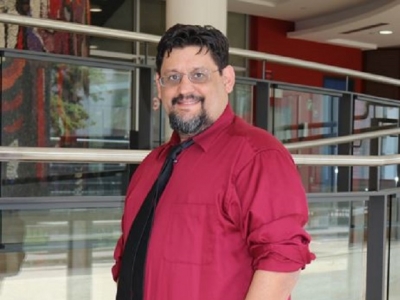Did you know that some butterflies can hear, and some even have use “hearing aids”?
 That’s what Biology student Carrie Sun found out when she started conducting her master’s research.
That’s what Biology student Carrie Sun found out when she started conducting her master’s research.
“Most butterflies who are active in the daytime don’t have ears, like the monarch, but those that do have well-developed ears, at the base of their forewing,” explains Sun.
She notes that some butterflies also have unusually enlarged wing veins that, previously, were thought to exist for making sounds, but evidence has contradicted this. “A lot of mute butterflies, including our study species, have them, so it’s not a very ‘sound’ hypothesis,” shares Sun.

So far, Sun says that their most compelling research idea is that the inflated veins are related to or help hearing because they are close to the ear of the butterfly; they’ve only been seen in butterflies with ears (never in butterflies who don’t have ears) and the researchers do have some experimental evidence.
In one experiment with a Common Wood-Nymph butterfly, the researchers found that their butterfly with its structure intact (e.g. hearing aid on) hears low sound frequencies well, but can’t detect the difference between different pitches.
Sun’s research results help further the understanding of sensory ecology in butterflies, many of which are endangered or key pollinators.
Says Sun: “These structures show new unique mechanism of insects enhancing their hearing that could inspire development of nano-acoustic technology, such as tiny microphones or earpieces, even smaller than hidden ones used today in espionage or communication.”
Sun recently presented her research at Carleton’s Three Minute Thesis competition.

She says that, surprisingly, she just wasn’t into insects when she was younger and notes that she still yelps and runs away from ants and spiders when they are indoors.
Sun is supervised by Carleton Biology Prof. Jayne Yack, who is a renowned expert on insect communication. You might often find Yack and her research team in the Yack neuroethology lab where they focus mainly on communication projects involving butterflies, moths, caterpillars and bark beetles but also have ongoing projects involving earthworms, birds and bats.
Regarding her future plans, Sun hopes to graduate this fall. “After that, I hope to begin a career in some sort of science or education capacity in the federal government, perhaps in National Collections, or continue with building a career as a teacher in science education and become a science teacher in one of the school boards I currently work for.” Sun is already an Ontario Certified Teacher and has worked part-time for two school boards in and around Ottawa.
In 2017, Sun was a Let’s Talk Science volunteer recipient of the Best New Volunteer on the Carleton campus: Award for Significant Contribution to Science Outreach.
For more information about our Master’s program in Biology, visit https://graduate.carleton.ca/cu-programs/biology-masters/ We also offer an MSc in Biology with specializations in the following areas: Biochemistry, Bioinformatics, Chemical and Environmental Toxicology and Data Science.

This story was written with files from Carrie Sun.
Tuesday, May 1, 2018 in Grad Student Research, News
Share: Twitter, Facebook





